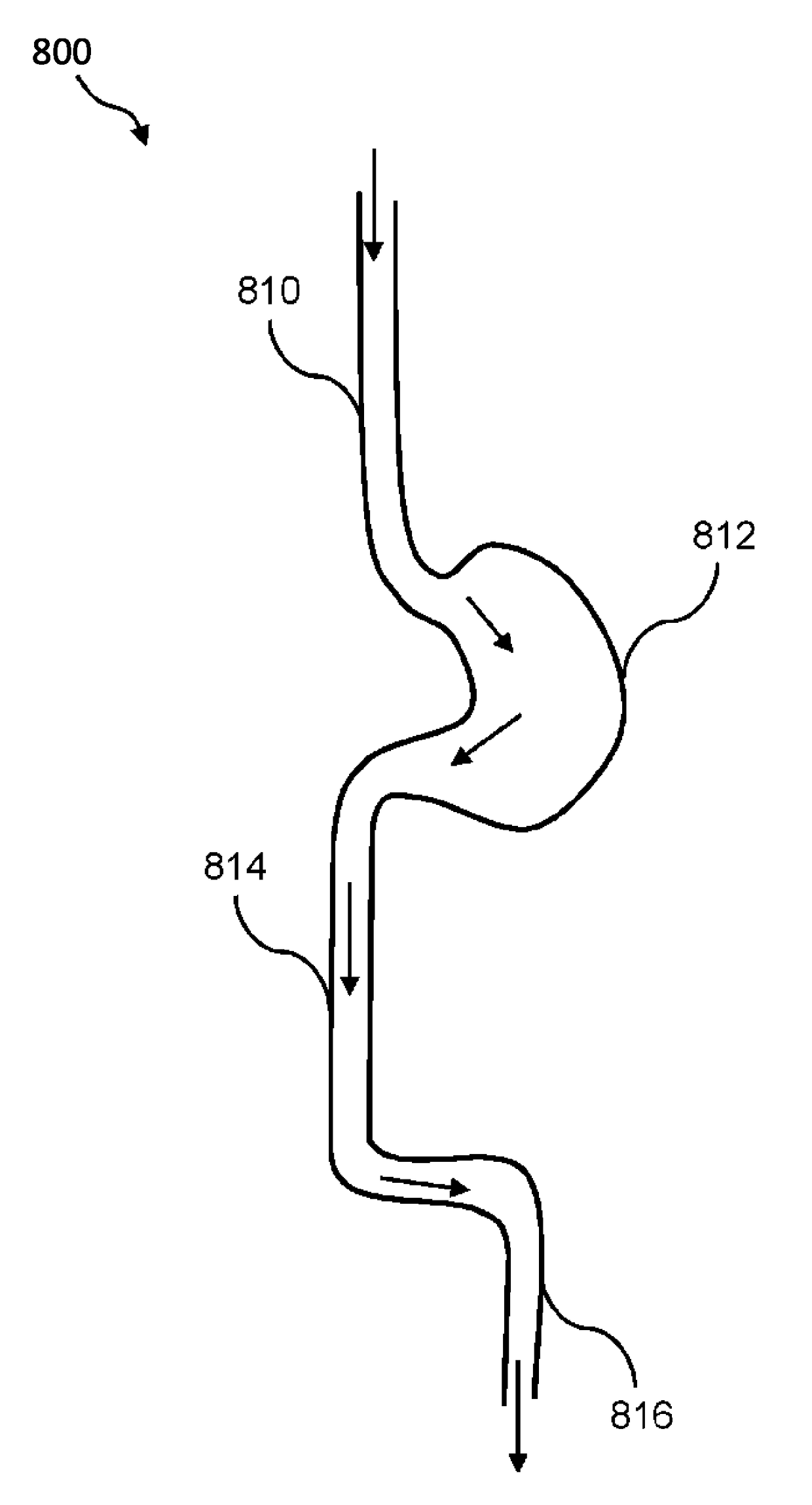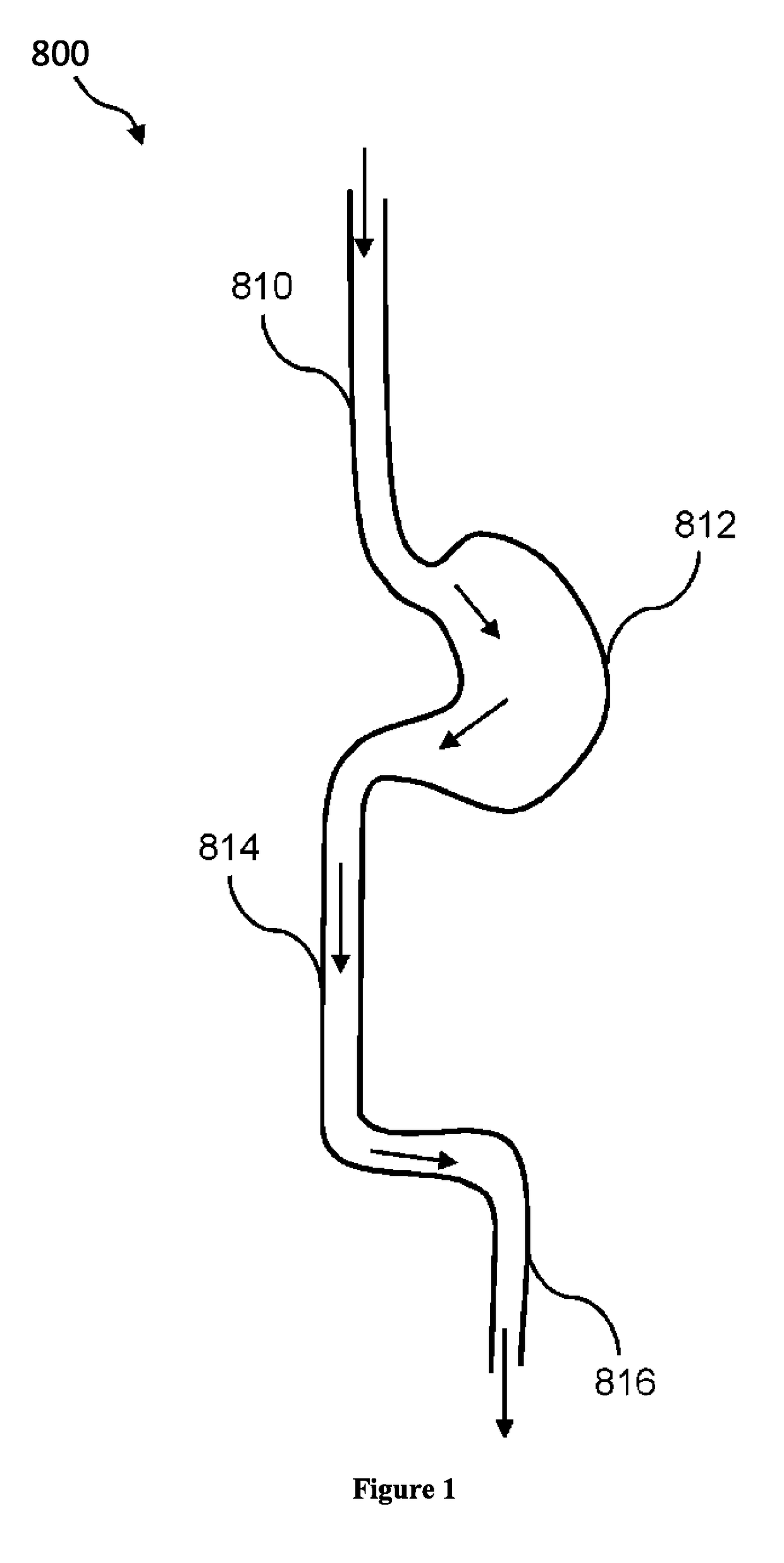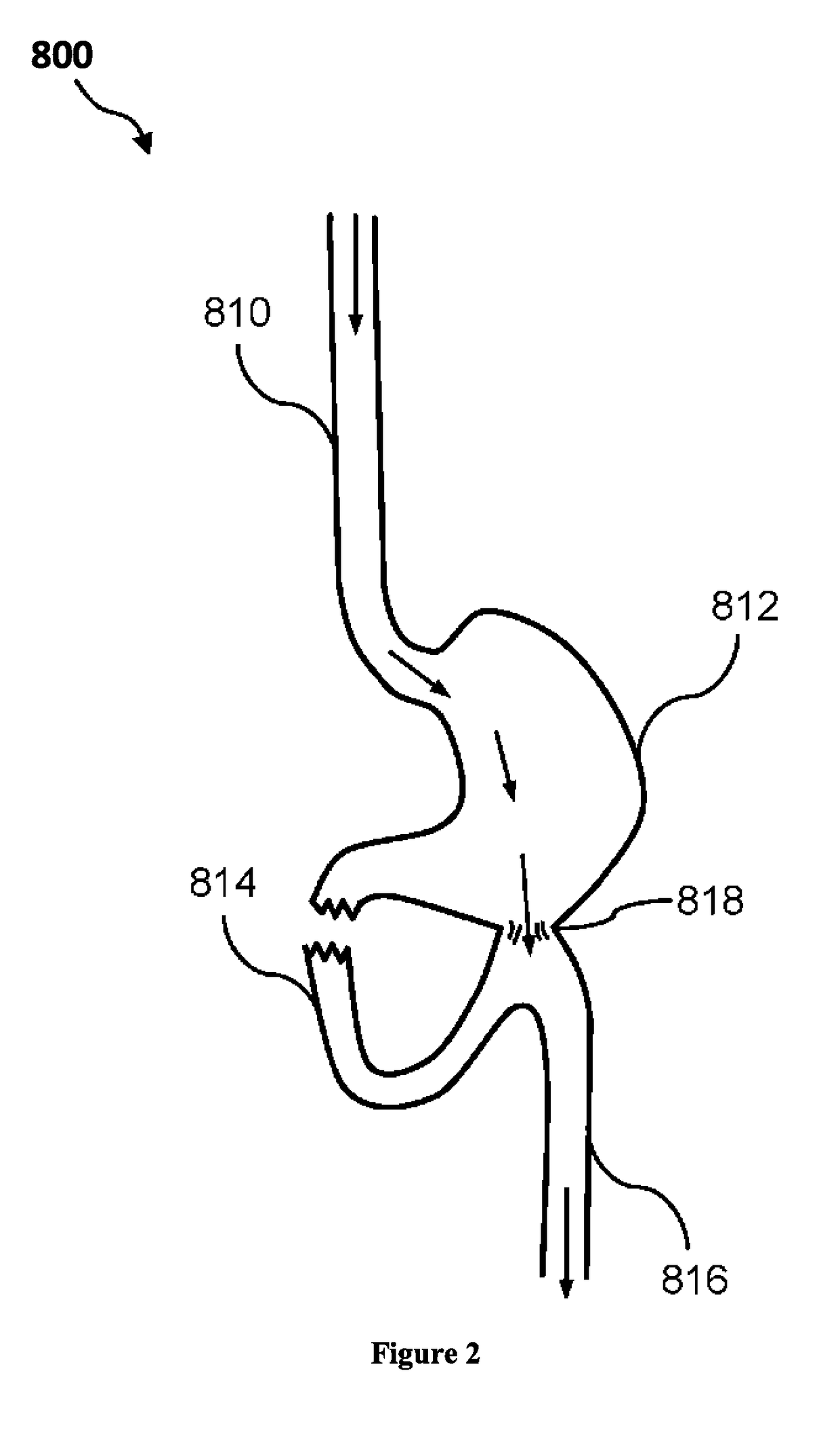Composition and method for treatment of metabolic disorders
- Summary
- Abstract
- Description
- Claims
- Application Information
AI Technical Summary
Benefits of technology
Problems solved by technology
Method used
Image
Examples
example 1
Formulations
[0089]This example sets forth illustrative formulations of the invention.
TABLE 1Formulation 1IngredientAmountChitosan1.0 gAcetic Acid1.0 gDI Waterqs (to 100 g)
TABLE 2Formulation 2IngredientAmountChitosan0.30 gAcetic Acid buffer (pH = 4.7)qs (to 100 g)
TABLE 3Formulation 3IngredientAmountChitosan3.0ghydroxyethylcellulose0.50gdextran0.30gsodium dihydrogenphosphate dihydrate0.25g1N sodium hydroxideq.s.hydrochloric acidq.s.sterile purified waterq.s. to 100g total weight
[0090]Formulation 3 was prepared as follows. A viscous, aqueous solution was prepared by mixing chitosan and water using Brinkmann Heidolph Electronic High-Torque Overhead Stirrer and a 4-blade 40 mm propeller rotating at 200-300 rpm. An aqueous solution of hydrochloric acid was added with stirring to give a clear gel. An aqueous solution of, sodium dihydrogenphosphate dihydrate and was added with stirring to give a clear solution. Hydroxyethylcellulose and dextran were added with stirring to give a clear solut...
example 2
Mucoadhesive Viscosity Assay Using Rheometer
[0093]The rheological properties and flow behavior of all formulations are measured using a programmable Brookfield Model DV-IIIT rheometer (Brookfield Engineering Laboratories, Inc., USA). The rheometer is used with the SC4-18 / 13R spindle and small sample adaptor at 37.0±0.1 C. Stock solutions of chitosan are prepared (2.0% w / w) in DI water, 1% acetic acid, or 0.1M acetate buffer (pH=4.7). Dried mucin is hydrated with each medium by gentle stirring for 3 h at room temperature to yield a dispersion of 10% w / w. A 5 gram aliquot of mucin dispersion is mixed on a vortex mixer with a 5 gram aliquot of the polymer solution in the corresponding media to give a concentration of 1.0% w / w with respect to polymer. The final concentration of mucin is 5% w / w. All materials are kept at 37.0±0.1 C for 1 h to equilibrate prior to analysis. Samples of each formulation are added to the chamber of the rheometer and allowed to equilibrate for at least 2 min ...
example 3
Mucin Complexation Turbidity Assay
[0098]Terms—These terms are used throughout the Examples.[0099]MW=Molecular weight[0100]LCS=50-190 kDa Chitosan[0101]MCS=190-310 kDa Chitosan[0102]PAA=poly(acrylic) acid[0103]HEC=hydroxyethylcellulose[0104]CA=Carbopol 974P-NF[0105]HA=Hyaluronic Acid[0106]PVP=Polyvinylpyrrolidone[0107]PVP-DMA=Polyvinylpyrrolidone-co-2-dimethylaminoethyl methacrylate[0108]PVP-CVA=Polyvinylpyrrolidone co-vinyl acetate[0109]GC=Commercial Gelclair™[0110]RC=Commercial Rincinol™[0111]MG=Commercial MuGard™[0112]PVA=Mowiol (Polyvinyl Alcohol mw 205K)[0113]PMVE-MA=Poly(methyl vinyl ether-alt-maleic acid)[0114]PDC=Poly(diallyldimethylammonium chloride)
[0115]Methods
[0116]Mucin Preparation
[0117]Porcine gastric mucin at 1% (w / v) was suspended in 100 mM acetate buffer solution (ABS), pH 4.7 overnight for complete dispersion. The dispersion was then centrifuged at 1,400 rpm at 4 degrees Celsius centrifuge machine. Supernatant was collected and refrigerated until use.
[0118]All polym...
PUM
| Property | Measurement | Unit |
|---|---|---|
| Length | aaaaa | aaaaa |
| Length | aaaaa | aaaaa |
| Length | aaaaa | aaaaa |
Abstract
Description
Claims
Application Information
 Login to View More
Login to View More - R&D
- Intellectual Property
- Life Sciences
- Materials
- Tech Scout
- Unparalleled Data Quality
- Higher Quality Content
- 60% Fewer Hallucinations
Browse by: Latest US Patents, China's latest patents, Technical Efficacy Thesaurus, Application Domain, Technology Topic, Popular Technical Reports.
© 2025 PatSnap. All rights reserved.Legal|Privacy policy|Modern Slavery Act Transparency Statement|Sitemap|About US| Contact US: help@patsnap.com



